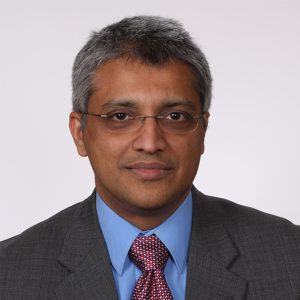Multiple Myeloma: Promising New Therapies, But Challenges Remain
This week, our series on multiple myeloma continues as we talk about immunotherapies and other promising new treatments with Shaji Kumar, MD. Dr. Kumar is a professor of medicine in the division of hematology at Mayo Clinic, where he chairs the myeloma group across all three Mayo sites. Dr. Kumar conducts National Institutes of Health-funded research on resistance mechanisms to common myeloma drugs and epidemiology of disease progression. He also receives funding from the Multiple Myeloma Research Foundation to study the relationship between molecular profiles, treatment regimens for patients with multiple myeloma and outcomes.
Inspirations
Real World Health Care: How did you become interested in the field of multiple myeloma?

Shaji Kumar, MD, Mayo Clinic
Shaji Kumar: I did my fellowship training at Mayo Clinic. Mayo is one of the most renowned institutions in the field of plasma cell disorders. Training at Mayo, and having the fortune of working with people like Professor Robert Kyle, was very inspiring and led to my interest in this group of disorders. The patients I see keep me inspired. While we have made some progress in this area, much work needs to be done and we need to develop a cure for this disease. The progress so far convinces me that we can reach this goal if we keep at it.
High-Risk Multiple Myeloma Patients
RWHC: What is the significance of your research work to the multiple myeloma patient community?
SK: I am involved in several aspects of myeloma research. In the laboratory, we try to understand how the myeloma cell survives, especially how the other cells in the body help them grow, and try to develop new drug combinations that can lead to better treatments. I try to translate these findings to the clinic in the form of early clinical trials, which if successful, can lead to larger phase 3 trials. I am the principal investigator of several phase 1, 2 and 3 clinical trials. Another area of great interest to me is risk stratification and identification of high risk myeloma. What we have seen is that patients with high risk myeloma continue to do badly despite all the new therapies. Moreover, there are still significant issues with the current systems for identifying high risk patients. We are trying to develop new approaches for risk stratification in myeloma and develop new treatment approaches for these patients.
Monoclonal Antibodies and Immunotherapy
RWHC: What promise do monoclonal antibodies and chimeric antigen receptor (CAR T-cell) therapies hold for the treatment of multiple myeloma? Could a cure be around the corner?
SK: Immunotherapy is the next frontier for myeloma. The results so far have been spectacular. The monoclonal antibodies have opened up a new class of drugs, and daratumumab especially has led to high response rates and deep responses in patients with myeloma. The next step is to combine the current classes of drugs to develop the most effective regimens. Other immunotherapy approaches, especially CAR T-cells, while early in the testing phase, has shown significant benefit among patients with very few options left. Other approaches to enhancing the T-cell immunity such as BiTE platforms as well as vaccination approaches are in clinical trials. All in all, this is an exciting time for myeloma and I am convinced that a cure is around the corner. What needs to be determined is if this will come from treating myeloma with these approaches or whether we need to intervene at the smoldering phase.
What Triggers Multiple Myeloma?
RWHC: What are some of the biggest challenges facing researchers studying multiple myeloma?
SJ: There are many challenges facing researchers. These include the lack of understanding the triggers for development of the disease, and the ability to identify patients who progress to myeloma in a specific fashion. Lack of good models for testing the myeloma cells outside of the patient, both for its behavior and responses to treatment, remains a problem. In the clinical trial arena, the ability to do clinical trials fast and also have faster readouts using surrogate endpoints remain a challenge.
















